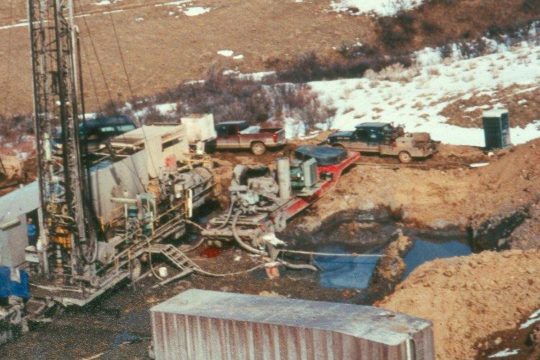Rigged: Big Oil, Big Subsidies
Every year, oil and gas companies make billions of dollars in profits from drilling on America’s public lands. Yet, American taxpayers continue to subsidize these companies with bargain-basement royalty and rental rates. Oil and gas companies are passing the buck with minimum lease bids that are well below market value and reclamation bonds that impose significant clean-up costs on taxpayers after oil and gas companies leave town.
The short of it is that while oil and gas executives are taking home $25 million dollar paychecks, American taxpayers are getting fleeced – at a time when stagnant oil and gas prices are forcing many western states to reduce spending on basic services and education.
Your Great-Great-Grandfather’s Royalty Rates
Royalty rates for onshore oil and gas production were established in 1920 – and have not changed since. They have stayed flat – at 12.5% – for decades, allowing the industry to enjoy billions, perhaps trillions, in windfall profits that rightfully belongs to American taxpayers. According to a report released just a few weeks ago by the Government Accountability Office (GAO), raising royalty rates to levels comparable to those on state and private lands would have a “negligible” impact on oil and gas production, while generating roughly $80 million per year in new income for federal and state taxpayers. That’s why many states charge significantly higher rates for state lands, including as high as 25% in Texas. Even the federal rate for offshore drilling is 18.75%
Outdated oil and gas rental rates and minimum bids are also costing taxpayers at least $50 million a year, according to a 2016 analysis by the Congressional Budget Office. Rental rates and minimum bids were set in 1987, and while they are supposed to be adjusted to ensure that taxpayer are receiving “fair market value [for] the use of the public lands and their resources” and to “enhance financial returns to the United States,” they have not been changed since. Oil and gas companies still pay between $1.50 and $2.00 per acre in rent, and can still buy an oil and gas lease for about eighty dollars. This allows the industry to engage in widespread speculation and to effectively squat on public lands for a nominal fee.
It’s Time to Reclaim the Reclamation Bond
Reclamation bonds represent another long-standing subsidy enjoyed by the oil and gas industry. They are supposed to prevent American taxpayers from getting stuck with the bill for cleaning up hazardous waste pits and removing unsightly and dangerous tanks and wellheads when oil and gas companies go bankrupt – an increasingly common occurrence. But the price of these bonds date to the 1950s and 60s, well before the advent of hydraulic fracturing and modern drilling practices and the expansion of drilling into areas never thought possible seven decades ago. In the years 2001 to 2011 alone, energy development sprawled over 3.8 million additional acres in the American West – a land mass larger than the State of Connecticut. That’s an enormous amount of new acreage that will one day have to be reclaimed, but the cost that companies have to put upfront for bonds hasn’t increased concurrently.
Current bonds range from $10,000 for individual leases – about the price of a used car – to $25,000 for statewide coverage. Companies willing to throw in $100,000 can get nationwide coverage, no matter how many leases or wells they own and operate. This is a bargain price when you consider that the potential liabilities associated with these woefully outdated bonding rates are astounding. According to GAO, reclaiming a single well can cost taxpayers over half a million dollars, and in 2016, there were over 94,000 producing oil and gas wells on public lands, not to mention thousands more idle and unreclaimed wells.
Yet, as of 2010, BLM had collected just over $162 million in reclamation bonds from the oil and gas industry. While it is unreasonable to assume that BLM – and by extension, taxpayers – will ultimately be responsible for reclaiming all or even a large percentage of wells currently found on public lands, it is just as unreasonable to assume that current bond amounts are adequate to fully protect taxpayers, particularly in light of the ongoing volatility in oil and gas markets and the increasing number of oil and gas companies filing for bankruptcy. One need look no further than Wyoming – where the state is currently facing $10 million in unbonded clean-up costs from just one bankrupt operator – to appreciate the risk.
So, while oil and gas executives are laughing all the way to the bank, they are handing the bill to American taxpayers. Until we finally modernize the fiscal structure for the onshore oil and gas program, the states and local communities that are most affected by oil and gas development will continue to struggle to pay for schools, libraries and police officers.
